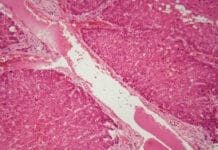The American Dental Association’s current dental terminology (CDT) is the standard set of codes and nomenclature for dental procedures. When most dental clinicians think of coding for dental procedures, they automatically think of front desk duties. That’s not necessarily true, though.
As a dental assistant over 25 years ago, I knew nothing about CDT codes. I had no idea that each code had a specific descriptor that helped determine if it was the appropriate code for the corresponding service, not just a title. I was also unaware of what may be pertinent information necessary to accompany the codes.
During my dental hygiene schooling over two decades ago, I was not taught about CDT codes, nor were they really discussed. When I graduated and stepped into the real world of dentistry, I was still in the dark about CDT codes. In my mind, I had no reason to know CDT codes or anything about coding. Dental clinicians, whose roles do not include front-office administrative duties, might think the same, right?
Why be Familiar With CDT Codes?
Everyone in a dental office should be somewhat familiar with CDT codes. That does not mean that each person in the office needs to know every code. It is important that there is familiarity with the most common codes. In addition, knowing that there are definitive descriptors of CDT codes that are determined by the American Dental Association Council on Dental Benefit Programs and Code Maintenance Committee is important. A dentist or hygienist does not arbitrarily define them.
Dental offices vary greatly in how they are set up to function. Some offices cross-train everyone, while others do not, and there are offices that fall somewhere between the two. It’s helpful for everyone to be familiar with CDT codes, cross-trained or not.
Each dental office is unique, but there is one thing they all have in common – the need to get paid for the treatment they provide. How most offices get paid for services rendered is a combination of patient copayments and billing insurance for reimbursement. The dental office must file a claim with CDT codes corresponding to the treatment provided to bill insurance. No matter who is paying for the treatment, each service rendered has a corresponding CDT code.
Treatment is rendered in the operatory, and the information is relayed to the front desk team, who then makes sure the corresponding CDT codes are entered for the claim. So, you may ask why a clinician (a hygienist, assistant, or dentist) needs to know about CDT codes if the front desk team files the claims. A clinician knowing how to communicate the services rendered will help ensure that all treatment is accounted for and that all necessary documentation is obtained.
Examples of How Accurate Documentation Helps
Sending a complete claim expedites reimbursement time. Having the correct documentation to accompany the claim reduces delays due to a lack of information or rejection for incorrect coding. For example, understanding that root canal treatment will likely require both pre-op and post-op radiographs showing the entire root apex, the dentist will prescribe the necessary radiographs and verify the necessary anatomy is visible and that the pre-op radiograph is current.
Another example is a treatment consisting of a fixed partial denture (bridge). Some insurance providers require that full arch radiographs be sent with a list of missing, not replaced, teeth in the arch. Ensuring the charting is current and that the full arch radiographs are current is necessary for all treatments. The dental team can work with the dentist to ensure the necessary radiographs are prescribed and verify that all charting is correct.
It is ideal that every office has a full series of radiographs on all patients, but what if that series is several years old? What if the patient had a tooth extracted at a specialist’s office, yet the tooth is still present in the radiographs on record in your office? Knowing what is required and verifying what is present in the patient’s chart will aid in reimbursement.
Intraoral photos are an invaluable tool. They not only help the patient see what the dentist is explaining about their dental condition but also help the insurance provider see what is not necessarily apparent on radiographs.
For example, some insurance providers are now requiring proof that build-ups have been done before reimbursing. This will require an intraoral photo to be taken after the build-up is complete but before the crown is prepped.
An intraoral photo can also be helpful when a tooth has fractures and/or craze lines seen in the mouth clinically but are not visible on radiographs. This often requires a crown to protect and restore the tooth.
Another example is when the primary mandibular central incisors are not exfoliating due to lingual eruption of the permanent central incisors, therefore necessitating extraction. A simple extraction may be indicated instead of only the coronal remnants extracted in this case. The combination of an intraoral photo and radiograph will show the necessity and help expedite payment.
In this example, it is also important to know the difference between the types of extractions so that when it is communicated to the front office team, the correct CDT code for the type of extraction is used. A few examples of CDT codes for extractions from CDT 2024, in part, include:1
- D7111: The extraction of coronal remnants of a primary tooth
- D7140: The extraction of an erupted tooth or exposed tooth using elevation/forceps for removal (simple extraction)
- D7210: The extraction of an erupted tooth requiring the removal of bone and/or sectioning of the tooth (surgical extraction)
Procedure Codes Related to Dental Hygiene
A dental hygienist’s job consists of caring for the patient and performing the treatment as the dentist prescribes. An example is when a new patient is examined, and the dentist treatment plans four quadrants of non-surgical periodontal therapy. It must be clear if the dentist is prescribing D4341 (four or more teeth per quadrant) or D4342 (one to three teeth per quadrant).
A good understanding of the specific CDT code descriptors for periodontal therapy will aid in this clarification, allowing for proper reimbursement. Again, it is not imperative that everyone in the office knows about every CDT code, but familiarity with the most common codes can help eliminate mistakes.
Examples of common hygiene-related CDT codes from CDT 2024, in part, include:2-4
- D1120: Prophylaxis on a patient with primary or transitional dentition
- D1110: Prophylaxis on a patient with permanent or transitional dentition
- D4346: Scaling in the presence of generalized moderate or severe gingival inflammation in the absence of periodontitis
- D4341 Periodontal scaling and root planing (SRP)/non-surgical periodontal therapy: Four or more teeth in one quadrant
- D4342 Periodontal scaling and root planing (SRP)/non-surgical periodontal therapy: One to three teeth in one quadrant
- D4910 Periodontal maintenance: Following non-surgical periodontal therapy/SRP, gingival flap or osseous surgery for the life of the dentition
In Closing
There are hundreds of CDT codes beyond the few mentioned here. It’s important to note that CDT codes and descriptors can change each year. The American Dental Association Code Maintenance Committee meets annually to accept, amend, or decline requests regarding CDT codes.5
The American Dental Association releases an updated CDT code book (print and e-book), app, and resources each year.5 CDT codes can also be found in most dental EHR software, although the descriptors are not included.
Once thought of as information for the front office team only, CDT codes should be known officewide. It would benefit the practice greatly if everyone on the team had a basic working knowledge of the codes. Code for what you do is the mantra of dental coding. With that being said, you can’t code for what you do if you don’t know code.
Before you leave, check out the Today’s RDH self-study CE courses. All courses are peer-reviewed and non-sponsored to focus solely on high-quality education. Click here now.
Listen to the Today’s RDH Dental Hygiene Podcast Below:
References
- ADA Guide to Extractions – Tooth and Remnants [Version 1]. (2019, June 1). American Dental Association. https://www.ada.org/-/media/project/ada-organization/ada/ada-org/files/publications/cdt/cdt_adaguidetoextractions_toothandremnants.pdf
- Claims Submissions: Scaling and Root Planing (SRP). (2022, September 19). American Dental Association. https://www.ada.org/-/media/project/ada-organization/ada/ada-org/files/resources/practice/dental-insurance/ada_claims_submission_scaling_and_root_planing_longversion.pdf
- ADA Guide to Reporting D4346 [Version 6]. (2023, January 1). American Dental Association. https://www.ada.org/-/media/project/ada-organization/ada/ada-org/files/publications/cdt/v6_adaguidetoreportingd4346_2023jan.pdf
- ADA CDT Collection. (2024). American Dental Association. https://www.ada.org/en/publications/ada-store-products/cdt-books-and-more
- Code Maintenance Committee (CMC). (2024). American Dental Association. https://www.ada.org/publications/cdt/code-maintenance-committee











